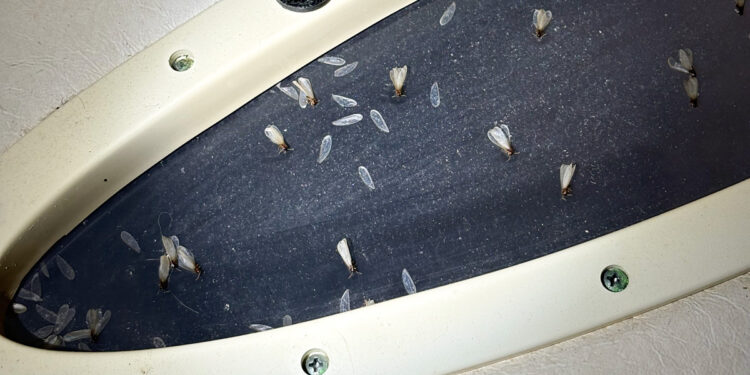Termites might be tiny, but they’re causing big problems—and they’re hitching rides on boats to do it.
A new study from the University of Florida shows that private boats, like yachts and sailboats, are helping these wood-eating pests spread across the globe. The research, led by scientist Thomas Chouvenc, suggests that humans are accidentally giving termites a free ticket to invade new places.
Chouvenc, a termite expert at the UF/IFAS Fort Lauderdale Research and Education Center, says boats are perfect for carrying invasive termite species—like the Formosan subterranean termite, the Asian subterranean termite, and the West Indian drywood termite—to far-off lands.
“Termites are a big problem for homeowners as they can damage wood in structures and infest trees. However, more and more cities are at risk of termite damage since some invasive termite species continue to spread in many new areas of the world,” Chouvenc said.
The study found that these termites aren’t just spreading naturally—they’re getting a big boost from people. Boats provide a cozy spot for termites to hide and travel long distances, way beyond where they’re originally from.
In the past, termites might have floated across oceans on debris after storms, but today, recreational boating is speeding things up. “It’s a game changer,” Chouvenc said. “Instead of a few termites accidentally crossing oceans once in a million years, we now have a high probability of them traveling on infested boats every year, dramatically increasing their spread potential.”
The damage these pests cause isn’t small. Since 2010, termites have cost people more than $40 billion worldwide every year. The Formosan subterranean termite alone is responsible for $20 to $30 billion of that. With more people buying boats for fun, experts worry the problem will only get worse.
South Florida, known as the “yachting capital of the world,” is a hot spot for this issue. Boats often have termite colonies living inside them. Once a boat is infested, it can carry the pests to new places—across the state, the country, or even overseas.
“When flying termites see city lights onshore, they leave the boat and start new colonies,” Chouvenc said. From there, the termites keep spreading.
What makes this tricky is that termites can hide for years before anyone notices. They reproduce slowly and stay out of sight, so by the time people spot the damage, it’s often too late to stop them. The study used surveys, DNA tests, and old records to prove that boats are a major way termites are sneaking around the world.
The bad news? Many boat owners don’t even know they have a termite problem. Yachts and other private boats aren’t usually checked for pests, so termites can spread without anyone catching on.
So, what can be done? Chouvenc says boat owners need to step up. He’s urging people, especially in coastal areas, to inspect their boats regularly for termites. Spotting them early could save homes, businesses, and billions of dollars.
“The spread of termites through boats is a slow-moving problem, but it’s growing,” Chouvenc said. “Often, it’s not just a matter of if some of these termite species will invade new areas, but when they will — and how far they will go.”
For now, the message is clear: termites are sneaky travelers, and boats are their ticket to ride. It’s up to people to stop them before they take over even more of the world—one dock at a time.








